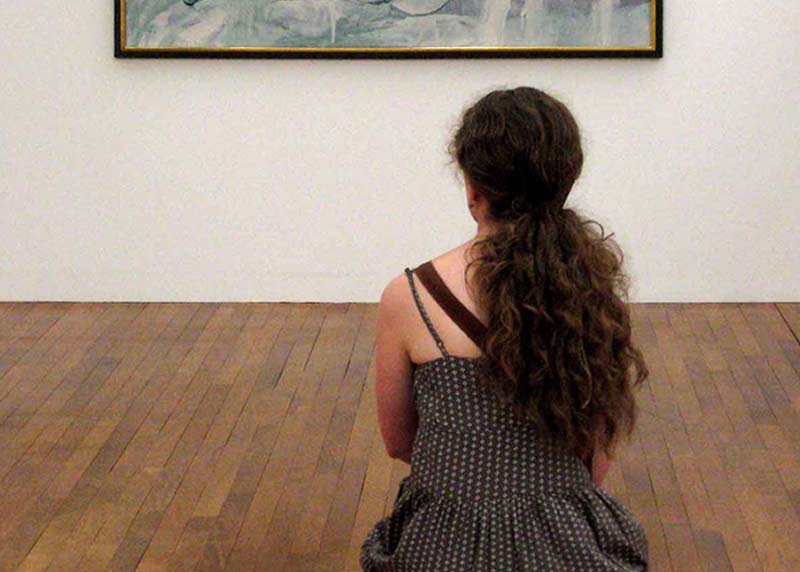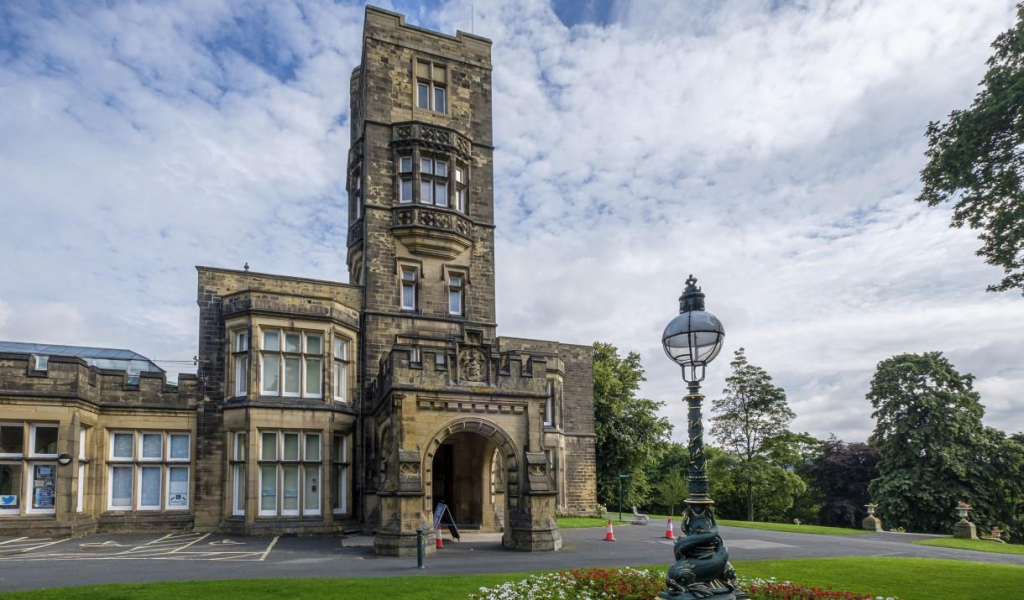


For their 5th Slow Art Day, Cliffe Castle Museum (part of Bradford Museums and Galleries), in Bradford, England, invited visitors to look slowly at 5 artworks:



Castle curators guided Slow Art Day participants on a tour to see the selected works of art and castle features. Others who wanted to look on their own were provided with a map showcasing the location of each of the selected objects, as well as a list of prompts (see the map and prompts below). Lowri Jones, Curator of Collections at Bradford Museums, reported that participants left great feedback about the format.


Love this map. How fun to see our turtle spread across the museum.
We also love the inclusion of architecture, which, of course, makes sense with a castle. Having said that, we encourage other institutions to see if there is a way to incorporate parts of their building, architecture or landscape into their Slow Art Day events.
We look forward to whatever Cliffe Castle Museum and Bradford Museums and Galleries come up with for Slow Art Day 2025.
-Johanna, Ashley, Jessica Jane, and Phyl
P.S. Stay up to date with events at Bradford Museums and Galleries via their Facebook, Instagram and X profiles.
For their third Slow Art Day, the Gorgas House Museum, which is the oldest dwelling on the campus of the University of Alabama, hosted an event focused on a bohemian blue bead that was found behind the museum and is believed to have once belonged to an enslaved person.
Slow Art Day coordinator, Dr. Sharony Green, Associate Professor at the Department of History at the University of Alabama, asked her students to study the bead and slavery in advance of the event, then create art based on their study (some even created haikus). She then invited the campus and local community to slowly look at the bead and hear about the students’ work.
Visitors were also invited to use bead stations that were set up in the front parlor of Gorgas House to make a blue bead bracelet to commemorate the event.


Above is a preview/link to the website they used to promote the project.

Dr. Green gave us some history about the bead:
The bead was found in an outdoor cooking area and was likely owned by an enslaved person. Some researchers believe it arrived via the Pacific Northwest and was brought to the Deep South via an indigenous trade network and that it was subsequently used as a protection amulet by an enslaved worker. While we speculate, we can also study the bead and sort through its significance during the antebellum period.
Dr. Sharony Green
Here’s a link to view some of the projects from Dr. Green’s students: Blue Bead Project Catalogue, and below you can scan a few of their photos and videos. All students took either an introductory level History class or an upper level History class taught by Dr. Green.
At Slow Art Day HQ we love how Dr. Green designed this whole Slow Art Day program – and that one small object, a bead, and its deep historical significance, became the point of inspiration for Slow Art Day. Thank you to Dr. Sharony Green, and her students, for such a unique event, and we look forward to whatever they come up with for Slow Art Day 2025.
-Johanna, Ashley, Jessica Jane, and Phyl
P.S. Stay up to date with future events at the Gorgas House via their social media @TheGorgasHouse

For their 2024 Slow Art Day (their fifth!), the Art Gallery of St. Albert in Canada invited local sketch groups to visit the exhibition Threading Through Time by Jamaican visual artist Raneece Buddan. Director Leah Louden told us they chose to focus on Raneece’s exhibition, in part because her work “rewards the viewer with lots of fine details you only discover through careful observation.”



This year, the museum decided to partner with a series of local organizations who could bring in “sketch groups” including the Edmonton Art Club, The Federation of Canadian Artists Edmonton Chapter, Sketch Around YEG Club, and the St. Albert Visual Arts Council Guilds.
Upon arrival, the groups were offered both free refreshments and free drawing materials. In total, over 30 visitors joined. Some participants stayed for an extended period of time, spending 2 hours drawing and slowly appreciating the artwork.
All visitors were encouraged to choose a single artwork in the show, and then look and sketch slowly. The museum also provided prompts (see below – and feel free to copy!).
Staff were on hand to answer questions and more in-depth information about the art and about the process of slow looking/sketching.
We can’t wait to see what the Art Gallery of St. Albert comes up with for their next Slow Art Day event in 2025.
-Johanna, Ashley, Jessica Jane, and Phyl
P.S. Stay up to date with events at the Art Gallery of St. Albert via their social media: @ArtGalleryofStAlbert on Facebook and Instagram